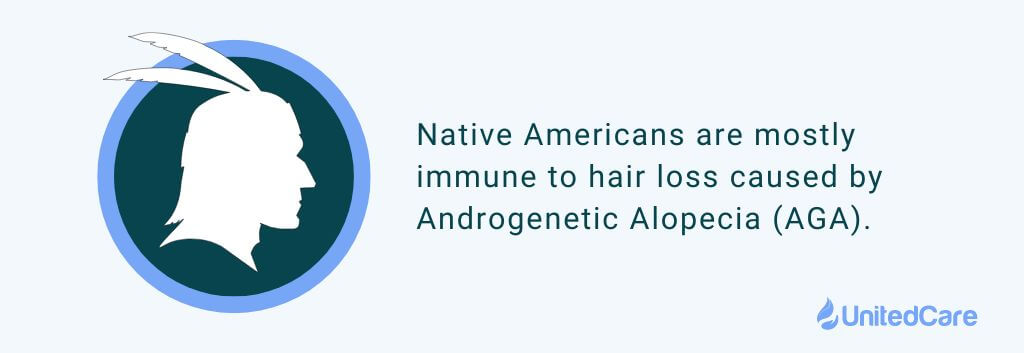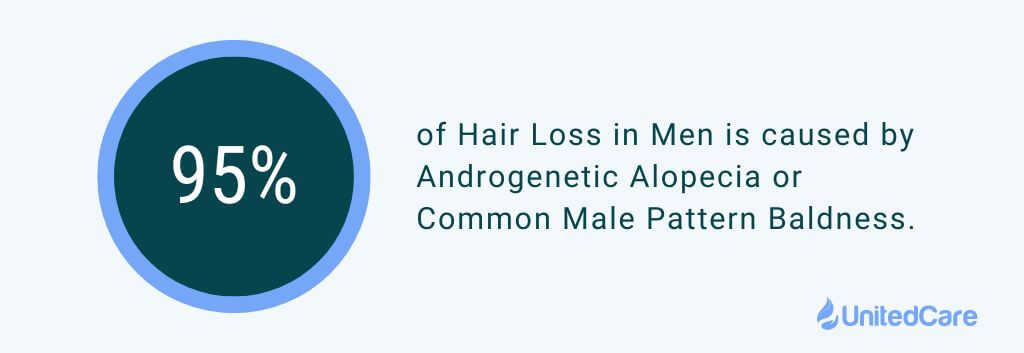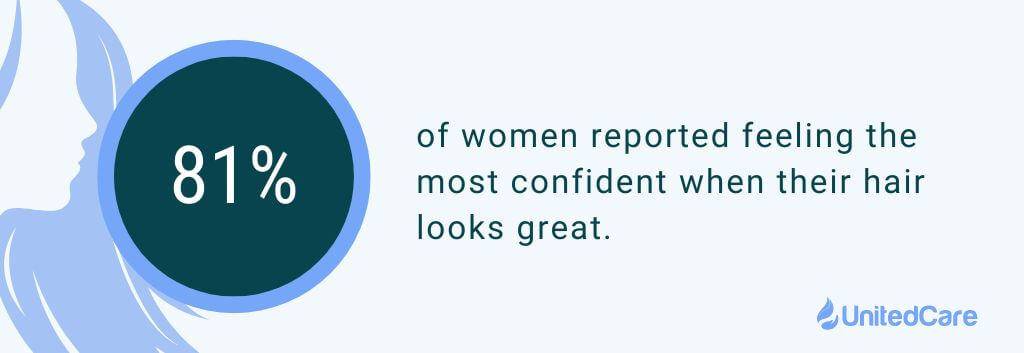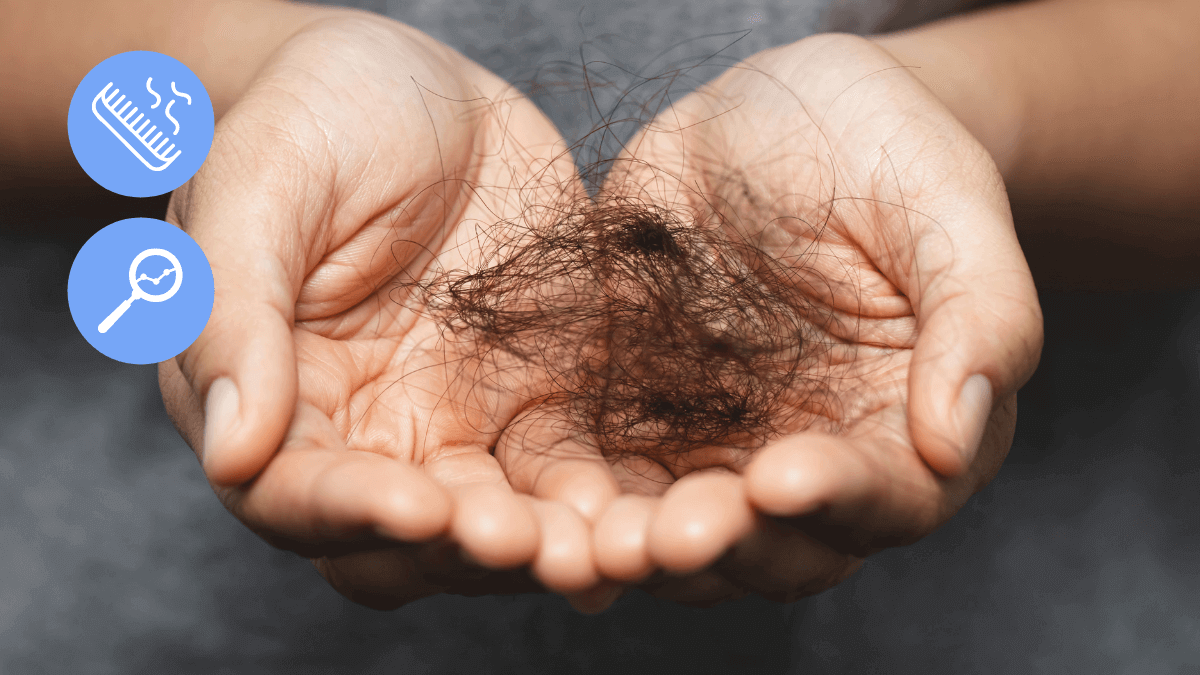TL;DR
▶ As long as they do not get frequent enough to cause visible balding, hair loss is natural for every person. An average person a day loses about 100 hair strands per day.
▶ However, as our diets in the modern day gets worse and pollution increases, hair loss becomes more and more common. In current statistics, by the age of 30, 25% of men and 12% of women lose hair.
▶ Hair loss is not only a physical condition but a psychological condition that adversely affects your perspective of your identity. As of now, your first step should be getting a diagnosis.
Hair is one of the most astonishing parts of the human body.
It is stronger than copper wire, it is a natural oil sponge that can absorb oil out of the water, and it definitely makes or breaks the look of a person.
That’s why losing your hair can be an issue that affects your whole social and professional life. We’re used to living with a full head of hair for so long, we become disoriented when we lose it.
In this list, I’ve gathered 28 statistics about hair, hair loss, and hair transplants that every person who’s experiencing any sort of hair loss should know.
Starting with the hair itself:
Table of Contents
Facts and Statistics About Hair
Here are a few facts and statistics about human hair you probably didn’t know, that will make you appreciate it more:
1- The average person has 100,000 hairs.
And each of these hair follicles has its own muscles that are capable of reacting individually.
Also, did you know the number of hairs on your scalp is strongly influenced by your hair color? (7)
2- Those with brown hair have an average of 110,000 on their scalp while redheaded people have 90,000 hair on average, and those with blonde hair have 150,000 hair on average.
This is because the lighter the color of a hair is, the thinner it is; which enables your scalp to support more of it.
3- An individual hair is supposed to be stretched by 30% in length when it is wet if it is healthy (8).
And if it doesn’t stretch by that amount, your hair has a protein deficiency that you should treat. You might know that nutritional deficiencies, including a lack of protein, can make you lose hair.
4- The fastest-growing tissue in the human body is hair.
On average, you grow 35 meters of total hair every day.
5- Every hair follicle you ever had and will ever have was formed before you were even born.
Hair follicles are where the individual hairs are produced. A single hair is produced, then continuously grows for years before it falls out of your scalp and gets replaced by new hair.
6- Currently, roughly 90% of all your hair follicles are in the anagen phase (growth) while the remaining are in transition (catagen) or resting (telogen) phases.
The individual hair grows in the hair follicle for 2-6 years (anagen phase) and then its growth slows down for 10 days (catagen). When the growth comes to a halt after this period, the hair rests for 3 months on your scalp (telogen) before falling out (exogen).
Most of your hair follicles are currently in the growth phase solely because of the length of this period.
Statistics About Hair Loss
7- It is completely natural to lose 50-100 hair strands per day.
You’ve definitely heard this before in elementary school or on the internet, and yes; since your hairs that were produced in your hair follicles grow, rest, and fall, losing hair to a certain degree is normal.

8- Native Americans are mostly immune to hair loss caused by androgenetic alopecia. (1)
Research suggests that most Native Americans are immune to hair loss caused by androgenetic alopecia (AGA). Their scalps are much less susceptible to male hormones that cause AGA, specifically DHT.
From most affected to least (1):
White Patients ➡ Asians ➡ African Americans ➡ Native Americans ➡ Eskimos
Hair Loss in Men (2) (3) (4)
Although statistics for hair loss are similar, men are significantly more likely to go bald compared to women, which is why most hair loss patients are male.
9- By the age of 20, 20% of men experience visible hair loss.
10- By the age of 30, 25% of men have visible hair loss.
Between 25-35, androgenetic alopecia and male pattern baldness start to display visible effects on the scalp hair, such as thinning and hairline receding.
11- By the age of 50, 50% of men experience balding.
12- And by the age of 60, over 66% of men have experienced pattern balding.
That’s two people out of three.

13- Androgenic alopecia, or common male pattern baldness (MPB), accounts for more than 95% of hair loss in men.
Even though there are numerous reasons for hair loss, the primary cause and types of hair loss in men are AGA and MPB.
However, this doesn’t mean that other reasons are irrelevant if you’re experiencing AGA. Numerous practices and medical conditions can aggravate or reduce the effects of your pattern baldness.
14- 43% of men with hair loss are concerned about losing an important part of their personal attractiveness, and 21% linked hair loss with depression
Our appearance is an important part of our identity.
Knowing that you’re permanently losing your hair, which has been an important part of your style all your life, does not only affect your appearance.
It can lead to a decrease in self-confidence and various other symptoms that come with it, which this 2005 study (3) confirms.
15- Young men with aggressive hair loss consume 70% more sugary drinks than those with healthy scalps
A recent Chinese research (4) concluded that men who suffer from hair loss tend to have a much unhealthier diet than those who don’t.
But the most significant finding was that those with hair loss consumed much more sugary drinks (70%+) than those with healthy scalps, highlighting the importance of a healthy diet in battling hair loss.
Hair Loss in Women (5) (6) (7)
16- 40% of women with alopecia have had marital problems, and 63% say they had career-related problems.
A 2005 study suggested that alopecia in women can slightly increase the chance of having problems related to marriage and work.

17- 81% of women reported feeling the most confident when their hair looks great; 72% say feeling good about their hair is empowering.
According to research, women spend twice as much annually on hair care as men, which is not surprising when you consider men tend to ignore their hair and scalp more than women.
18- Between the ages of 30 and 40, 3-12% of women experience some visible female pattern hair loss (9).
Female pattern hair loss rises with age in Caucasian women:
- Between the age of 30 and 40: 3-12%,
- In the 50s, Postmenopausal women: 14-28%,
- Older than the 70s: 29-56%
19- By age 49, 25% of women have visible female pattern hair loss.
Female Pattern Hair Loss (FPHL) is different than male pattern balding and is evaluated through a different scale.
20- By the age of 69, 41% of women have female pattern hair loss.
21- By age 80, 57% of women display visible pattern hair loss.
The stress of pulling their hair and forming them into stressful hairstyles such as tight buns or ponytails also causes traction alopecia.
First Step: Diagnosing Your Hair Loss
The first step to treating any illness or medical condition is first to diagnose it.
If you notice any signs of balding, make sure you see your dermatologist to understand what’s happening.
You can also schedule a free consultation for a hair transplant surgery here at UnitedCare:
Restore your natural look with a Dermatologist:
UnitedCare and its expert dermatologist doctors provide you with a holistic approach to FUE surgeries.
Frequently Asked Questions (FAQs)
What percentage of people lose hair?
By the age of 30, 25% of men and 12% of women lose hair. This number increases to 50% for men and 25% for women at 50.
Is hair loss becoming more common?
With our diets worsening and environmental pollution increasing, hair loss is possibly becoming more and more common. Also, since the psychological effects of balding are now much clear, more attention is drawn to the medical condition.
How many people have hair loss in the world?
Every person in the world experiences hair loss to some extent, whether it is due to aging or androgenetic alopecia. The exact number of people who suffer from hair loss at the moment is possibly in the billions.

